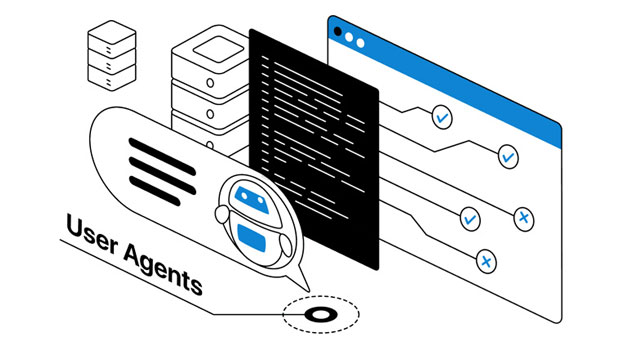In the world of internet proxies, residential proxies have gained significant attention due to their ability to provide users with IP addresses from real residential locations. These proxies are often used for activities such as web scraping, social media management, or browsing anonymously. Two notable players in the residential proxy market are PYPROXY and Infatica. Both claim to provide extensive proxy networks, but the question remains: which service offers more country coverage in terms of IP availability? This article will dive deep into a comparison of PyProxy and Infatica, analyzing their global IP reach, service features, and other critical factors to determine which one stands out in terms of international coverage. Overview of Residential Proxies: Understanding the Importance of Country CoverageResidential proxies are different from data center proxies because they use real IP addresses assigned to residential internet service providers (ISPs). These proxies mimic the IP addresses of ordinary users, making them appear as legitimate traffic to websites. For businesses and individuals needing to access region-specific data or test how their content appears in different locations, the ability to have IPs from various countries is crucial. The more diverse the geographical coverage, the better the proxy service can cater to global needs.The IP coverage across countries refers to how many countries a proxy provider’s network spans, and how many unique IP addresses they offer from each country. Having a broader geographical spread allows users to bypass geo-restrictions, perform region-specific market research, or test services and websites in different locales. Therefore, understanding which residential proxy provider has the most expansive network of countries is fundamental when deciding which service to use for global tasks.PyProxy's IP Coverage: Analyzing the Global ReachPyProxy is a notable provider of residential proxies, offering an extensive pool of IP addresses from various locations across the globe. Their proxy network is designed for flexibility, serving industries such as e-commerce, data scraping, ad verification, and SEO analysis. When analyzing PyProxy’s country coverage, we find that the service supports a wide range of regions, including but not limited to North America, Europe, South America, and Asia.While PyProxy does provide substantial global coverage, it is important to note that the service focuses more on high-demand countries with larger internet user populations. As such, its network excels in countries like the United States, United Kingdom, Canada, and Germany, but might have fewer IPs in smaller, less commercially lucrative markets. In terms of country coverage, PyProxy is competitive, but it does not claim to offer the largest pool of IPs in every region.Additionally, PyProxy’s network allows users to filter IP addresses based on specific countries or continents. This can be particularly useful for those targeting specific markets or conducting localized testing. The quality of the proxies is generally reliable, with low detection rates, making them useful for tasks that require anonymity and stealth.Infatica's Global Proxy Network: A Detailed ReviewInfatica, another prominent name in the residential proxy industry, boasts an equally impressive global network of residential IPs. They offer an extensive network aimed at serving clients across a wide array of industries, including e-commerce, data analytics, and online security. Infatica’s approach to country coverage is particularly aggressive, targeting a diverse range of countries, both well-known and emerging markets.Infatica’s network is particularly strong in countries where businesses are expanding rapidly, such as Eastern Europe, South Asia, and Africa. It provides a competitive edge for users who need to access emerging markets or test content in regions that are often overlooked by other proxy providers. As with PyProxy, Infatica ensures a high level of anonymity and security, allowing users to browse the internet with real residential IPs.Infatica also focuses on ensuring that its proxy network spans continents and includes IPs from nearly every major country. This is a notable advantage when compared to PyProxy, especially in terms of the diversity of regions served. Infatica might not have the highest volume of IPs in every single country, but its service excels in providing users with a wide geographical spread, especially in countries where digital presence is growing rapidly.Comparing Country Coverage: PyProxy vs. InfaticaWhen it comes to IP coverage across countries, both PyProxy and Infatica are highly competitive, but Infatica holds a slight edge in terms of the number of countries covered. PyProxy’s focus is more on high-demand countries in North America and Western Europe, while Infatica casts a wider net, covering emerging markets and countries in South America, Asia, and Africa.Infatica has made efforts to establish a presence in regions that other proxy services may neglect, such as parts of Africa, Southeast Asia, and Eastern Europe. This extensive global reach makes Infatica a better option for businesses and individuals who need proxies from less-represented regions. However, PyProxy may offer better coverage in the most commercially developed countries like the United States and the United Kingdom, where its proxy network is robust and reliable.Other Key Factors to Consider: Speed, Reliability, and PricingWhile country coverage is an important factor in choosing a residential proxy service, it is not the only one. Speed, reliability, and pricing are also crucial elements that determine the overall quality of a service.Both PyProxy and Infatica offer high-speed proxies with low latency, making them suitable for tasks that require quick data retrieval, such as web scraping or ad verification. However, Infatica’s broader network coverage can sometimes introduce slower speeds in specific regions due to the density of IPs available in those areas.Reliability is another key consideration. Both providers maintain solid uptime, but Infatica’s larger pool of IPs can potentially offer more stable connections since there are more IPs to choose from. This can be a significant advantage when users need consistent performance for long-term tasks.Pricing is another critical factor. PyProxy’s pricing model is generally more cost-effective for users who only need access to proxies from major countries. Infatica, while offering a more extensive network, may come at a higher price point due to the added value of global coverage. Users will need to weigh the cost against the need for broader geographical access.Conclusion: Which Proxy Provider Has Better Country Coverage?In conclusion, both PyProxy and Infatica offer competitive residential proxy networks with substantial IP coverage across countries. However, when it comes to sheer country diversity, Infatica appears to have the edge, offering a wider range of countries, especially in emerging markets. PyProxy, on the other hand, is highly competitive in more developed regions such as North America and Western Europe.Ultimately, the choice between PyProxy and Infatica will depend on your specific needs. If your business or personal use case requires proxies from niche or underrepresented regions, Infatica is likely the better choice. If you are primarily focused on established markets with a reliable and robust proxy network, PyProxy could be more cost-effective while still meeting your requirements.Choosing the right provider is not only about the number of countries covered but also about the quality, speed, and price of the services offered. Both PyProxy and Infatica provide excellent services, but understanding which one best fits your requirements will help you make the most informed decision.
Mar 28, 2025
![arrow]()




























































